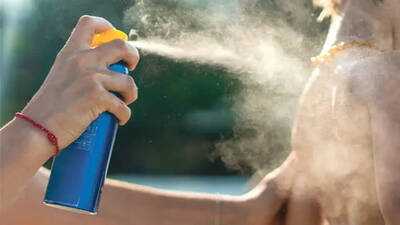
If you’ve ever struggled to apply sunscreen on wet, squirming children or tried to cover hard-to-reach spots on your back, it’s easy to see why spray sunscreen is appealing. Quick, convenient, and seemingly mess-free, spray sunscreens are especially popular during summer outings. But according to dermatologists and research, this convenience can come at a cost—if used incorrectly.
Spray sunscreen can provide effective sun protection, but only when applied properly. According to the
American Academy of Dermatology (AAD), the clue is choosing a broad-spectrum, water-resistant sunscreen with SPF 30 or higher that protects against both UVA and UVB rays—two types of ultraviolet light that damage skin and increase skin cancer risk (AAD). Alarmingly, about 1 in 5 Americans will develop skin cancer in their lifetime, making sunscreen use essential—not optional (AAD)
.
However, a growing body of research shows that spray sunscreens may be less effective if people don’t use them correctly. Let’s break down six common mistakes—and what science and dermatologists say to do instead.
Not applying enough spray sunscreen? Here's the right amount
Unlike lotion sunscreen, which can be measured (one ounce or a shot glass full for the body), spray sunscreen doesn’t give you an easy visual cue for quantity. A study published in
JAMA found that people often apply far less than needed, with sprays delivering only 20-50% of the recommended amount.
Dermatologists recommend spraying each section of the body for at least six seconds and then rubbing it in thoroughly. “If the skin isn’t visibly glistening, you’re probably not using enough,” says Dr. Hannah Kopelman, a New York-based dermatologist. Dr. Rachel Day advises patients to imagine using a golf ball-sized amount for each body part—even with sprays.
Why you must rub in spray sunscreen for full protection
Many users wrongly assume that a quick spritz is all it takes. But dermatologists warn this leads to uneven coverage and leaves skin vulnerable to burns. “Sunscreen needs a uniform layer to work effectively,” says Dr. Kristin Baird, FAAD. Studies also show that unless the product is rubbed in, it may sit on the skin’s surface or evaporate before absorption—especially in dry or windy conditions.
The worst places to use spray sunscreen—and what to avoid
Applying spray sunscreen in windy or enclosed environments, like inside cars or bathrooms, reduces its effectiveness. A breeze can blow much of the product away before it reaches your skin. More worryingly, inhaling the particles—especially with aerosol sprays—can irritate the lungs, nose, and throat. This concern has been flagged by the FDA and dermatologists alike.
One layer isn’t enough: How to properly layer spray sunscreen
Even if you spray correctly, one coat might not be enough—especially for all-day sun exposure. “I usually spray, rub in, spray again, and rub in,” says Dr. Baird. According to dermatologists, layering sunscreen is particularly important with spray formulations, which tend to go on clear and patchy, making it easy to miss spots.
Mineral-based sprays may help, as they apply more visibly and allow users to see where coverage is missing.
Don’t forget to reapply: The 2-hour rule you shouldn’t ignore
All sunscreens, including those with higher SPFs, need to be reapplied every two hours or immediately after swimming or sweating. High-SPF products can create a false sense of security, but their extra protection is marginal beyond SPF 50 (AAD).
Studies confirm that real-world sunscreen effectiveness depends more on reapplication and coverage than SPF alone.
Using expired sunscreen? How heat and time break it down
Like any skincare product, sunscreen has a shelf life. Heat exposure—like being left in a hot car—can degrade its active ingredients. Dermatologists advise replacing sunscreen at the start of each season. “New season, new trip, new sunscreen,” advises Dr. Baird. Always check expiration dates and store your spray in a cool, dry place.
Spray sunscreen isn’t inherently bad—in fact, it can be just as effective as lotions if applied correctly. But research and expert advice agree: most people aren’t using it the right way.
To make the most of your spray sunscreen:
- Use enough (six seconds per area)
- Rub it in
- Avoid windy or enclosed spaces
- Layer up for better coverage
- Reapply every 2 hours
- Don’t use expired products
Convenience is great, but only if it protects your skin. With sun damage being the top preventable cause of skin cancer, proper sunscreen use isn’t just a good idea.
 If you’ve ever struggled to apply sunscreen on wet, squirming children or tried to cover hard-to-reach spots on your back, it’s easy to see why spray sunscreen is appealing. Quick, convenient, and seemingly mess-free, spray sunscreens are especially popular during summer outings. But according to dermatologists and research, this convenience can come at a cost—if used incorrectly.
If you’ve ever struggled to apply sunscreen on wet, squirming children or tried to cover hard-to-reach spots on your back, it’s easy to see why spray sunscreen is appealing. Quick, convenient, and seemingly mess-free, spray sunscreens are especially popular during summer outings. But according to dermatologists and research, this convenience can come at a cost—if used incorrectly.